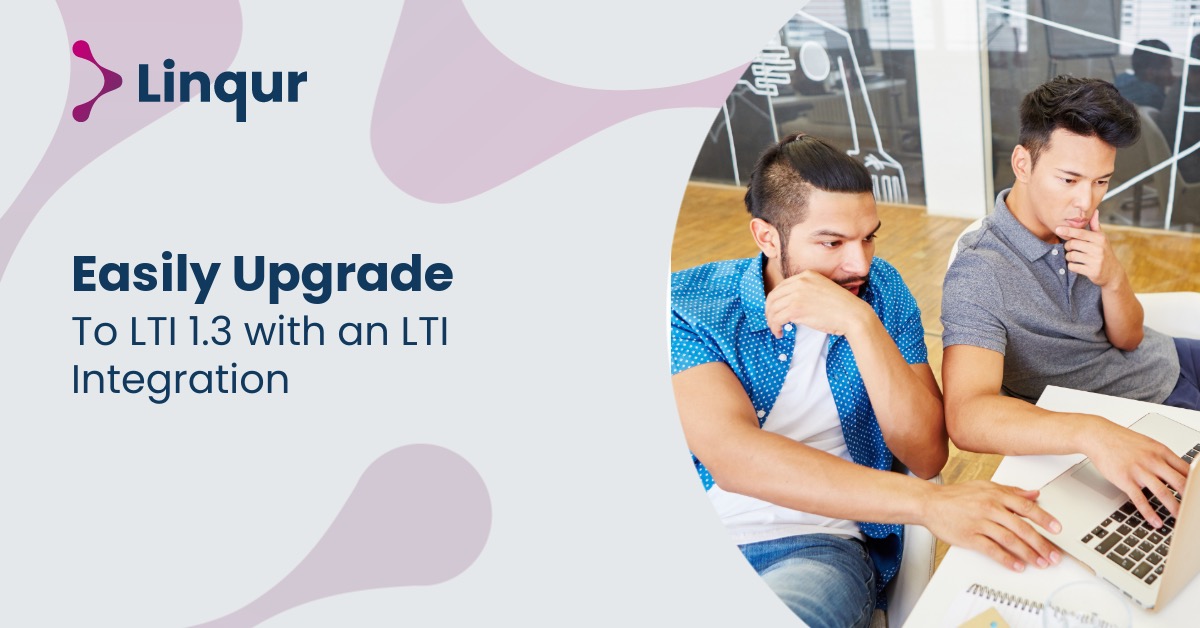LTI 1.3 is the latest version of the Learning Tools Interoperability standard, offering significant improvements over its predecessor, LTI 1.1. While LTI 1.1 provided a solid foundation for integrating learning tools and content into an LMS, LTI 1.3 enhances security, flexibility, and functionality. It includes improved Single Sign-On capabilities, robust data security, and support for complex workflows through LTI Advantage extensions. If you're still using LTI 1.1, now is the perfect time to transition to LTI 1.3 and future-proof your learning environment.

LTI 1.1 was launched in 2012 by 1EdTech as an extension of the original LTI specifications. It introduced the ability to integrate external tools like quiz modules, e-learning content, and other learning resources into LMSs via a standard Single Sign-On (SSO). This allowed users to access these tools without requiring multiple logins. LTI 1.1 enabled basic data transfer and was designed to save time and effort in integrating various tools into a single learning environment.
LTI 1.3, released in 2019, was developed to address increasing demands for enhanced security and data management in educational environments. With the rapid evolution of technology and e-learning usage, stronger authentication protocols were necessary. LTI 1.3 incorporates OAuth 2.0 and OpenID Connect, offering a much more robust and secure authentication process. This allows platforms to support safer integrations and expand data exchange capabilities, enabling better connectivity between tools and content within systems.
Learn more in our blog: “LTI 1.1 vs. 1.3: Which Version Is Right for Your Learning Platform?”
LTI 1.3 provides improvements across multiple areas:
Linqur provides comprehensive support for transitioning to LTI 1.3. From initial planning to implementation, our team of experts ensures a seamless upgrade of your LTI connection. We offer:
Upgrading to LTI 1.3 is an investment in the future of your learning environment. It provides a more secure and flexible infrastructure, enabling better collaboration between your training tools and learning resources.
By following the steps outlined above, you can transition smoothly and efficiently, ensuring your organization is prepared for the latest advancements in learning and development. Need assistance? Contact us—our team is ready to help!
Ralf is our dynamic growth hacker and marketing jack-of-all-trades. He is the driving force behind our marketing efforts and loves exploring new markets. Outside of work, you can often find him traveling or surfing, always on the lookout for the next adventure.
With our LTI Provider Service, you can integrate your content into any LMS. Fast, simple, and hassle-free. Get the brochure and find out how!
With SCORM Proxy, you can play SCORM courses in any LMS without worrying about updates or hosting. Sounds good? Request the brochure!
Our LTI Converter transforms SCORM into LTI, making your content work in any LMS. Want to know how? Download the brochure and find out for yourself!
With Magic Link Login, your users log in securely with just one click – no passwords, no hassle. Discover how in the brochure!
With the Linqur API, you can seamlessly connect e-learning systems and automate everything. Download the brochure and discover the benefits.